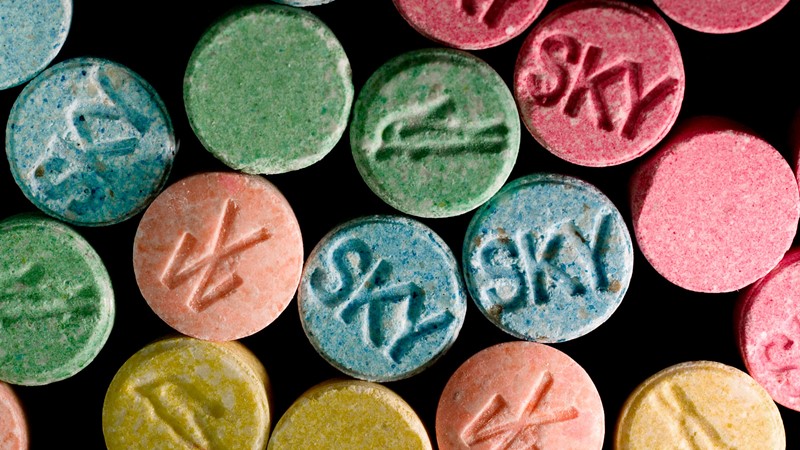Wondering what Molly is? A little introduction wouldn’t hurt. It is simply a street name for psychoactive drug 3, 4-methylenedioxymethamphetamine (MDMA). Other street names for this drug are Ecstasy, Legal X, Legal E, A2 and E. Molly is also known as the ‘club drug’ as it is extensively used in night parties. People of all ages take this drug and you can find in every part of the world. People who take this drug wonder how long will it stay in their system. It is not easy to figure out the exact duration of time it stays in the body.

How Long Does Molly stay in Your System?
The time duration molly stays in your system purely varies according to the amount you have taken. It depends on how many times you have taken it whether once or more than once. If you happen to take just a single dose, it will leave your body faster. If you have taken it several times, it will remain in your system for a longer time. It is not recommended to take yet another dose when the effects of the initial hasn’t faded because this will result in severe hangovers.
Drug test can help check out traces of molly in your hair, urine, saliva and blood. The test results will differ according to the amount of drug you have taken. Molly usually leaves your blood faster compared to urine, hair or saliva.
Single Dose
A single dose of Molly gives the following results:
- Saliva: Traces of Molly takes 1 to 3 days to clear out.
- Urine: Traces of Molly can be detected in urine for 1 to 3 days.
- Hair: Traces of Molly can be found in the hair for three months.
- Blood: Traces of Molly remains in the blood for 12 hours.
Multiple Doses
Several doses of ecstasy take more time to leave your system and the tests show the following results:
- Saliva: Traces of molly remains in saliva for 1 to 5 days.
- Urine: Traces of molly can be detected for 2 to 5 days.
- Hair: Traces of Molly can be found in the hair for three months
- Blood: Traces of Molly remains in the blood for a day or more.
Molly and its side effects
The first thing you should know after learning the amount of time Molly remains in your system is its possible side effects. In order to keep yourself from the harsh results, you should know its side effects. It is a stimulant and comes with a variety of side effects and here are some:
- Short term side effects: It will just take fifteen minutes to be ingested by the system and only after forty five minutes you are likely to feel high. Some of the side effects that don’t last long are blurred vision, sleep problems, nausea, chills, muscle tension, impaired judgments, depression, false sense of affection, confusion, increased heart rate, increased blood pressure, sweating, severe anxiety, paranoia and drug cravings.
- Long term side effects: some of the effects that are long lasting include convulsions, degenerated nerve branches, depression, kidney failure, psychosis, hemorrhaging, death and even cardiovascular collapse. Molly should be taken in controlled amount as higher amounts can cause death. You can end up with anxiety and depression for several week even after taking a single dose.
- Possible Dangers: Anyone who takes Molly is at a huge risk of becoming dehydrated. If you are in a hot environment, it can raise havoc on you. Make sure you don’t drink alcohol along with Molly as you can become a serious case of dehydration. It will eventually increase your body temperature to a dangerous level. Secondly, remember not to take Molly with antidepressants as it can result in your death.
Initially it might not feel like much of a problem. However, when this drug interferes with the ability of your body to control temperature, you can end up with kidney problems, heart problems and also unexpected death. This happens whether you take small or high dose. Taking multiple doses of molly can negatively affect the normal rhythm of your body and cause seizures.
- Negative effects on the Brain: it is common knowledge that it is the brain that sends message to different organs through nerve cells or neurons. These neurons make use of serotonin to make communication and molly interferes with it. Serotonin plays a role in regulating aggression, pain sensitivity and mood. However, molly interferes and affects how you perceive things and can also cause memory loss in long term users.
What are the factors that influence how long Molly stays in your system?
You probably have noticed that when two people take the same amount of ecstasy, one person may take it longer to clear it out of the system than the other. Why does that happen? It depends on various individual factors like:
- Age: your age can determine the speed at which ecstasy gets metabolized in your system and is eventually washed out of it. The younger you are, the faster your metabolism will be compared to someone elderly. This means older people will take more time to get rid of molly.
- Body mass index: Your BMI includes your weight and height. It has been observed that smaller individuals find it hard to process standard dose of molly as compared to bigger individuals. This means smaller individuals take longer than bigger individuals to wash out molly from their system.
- Genetics: Your genetic makeup can affect the speed at which certain drugs are metabolized. Molly is mainly metabolized in the liver. Certain genetic variants effect the speed at which it gets metabolized. This means people who have those genetic variants responsible for metabolizing it faster will excrete it faster compared to those who don’t.
- Metabolism: you rate of metabolism is effected by various factors like hydration, dietary intake, lean body mass and exercise. People who happen to have fast rater of metabolism will get rid of molly faster compared to ones with slower metabolism.
- Kidney/Liver function: it is mainly the liver that metabolizes molly. People with poor liver function cannot metabolize molly as fast as someone with a liver that functions to its optimum.
[ref]https://www.ncbi.nlm.nih.gov/pmc/articles/PMC2948966/[/ref]
[ref]https://www.ncbi.nlm.nih.gov/pmc/articles/PMC3797173/[/ref]







